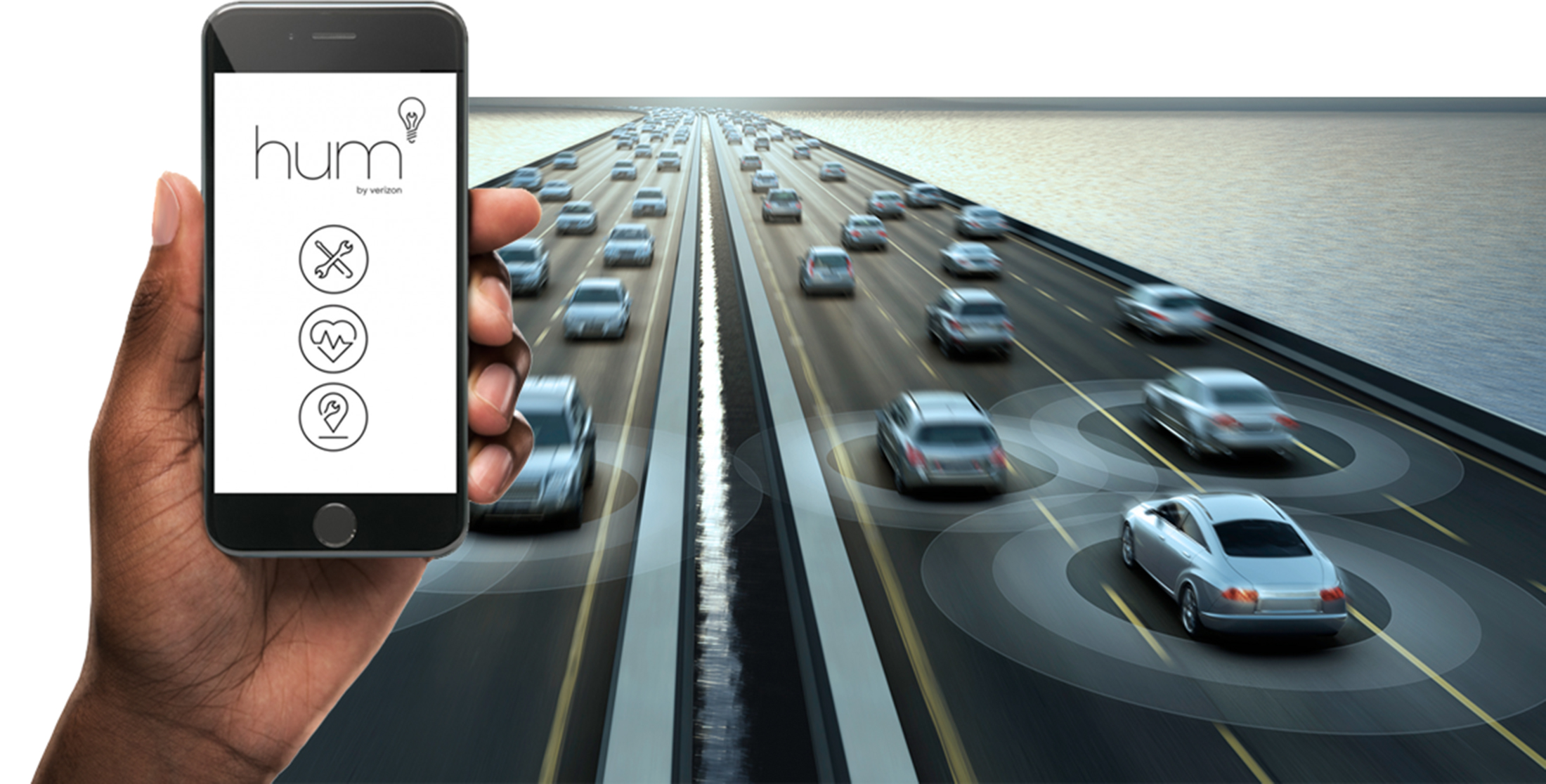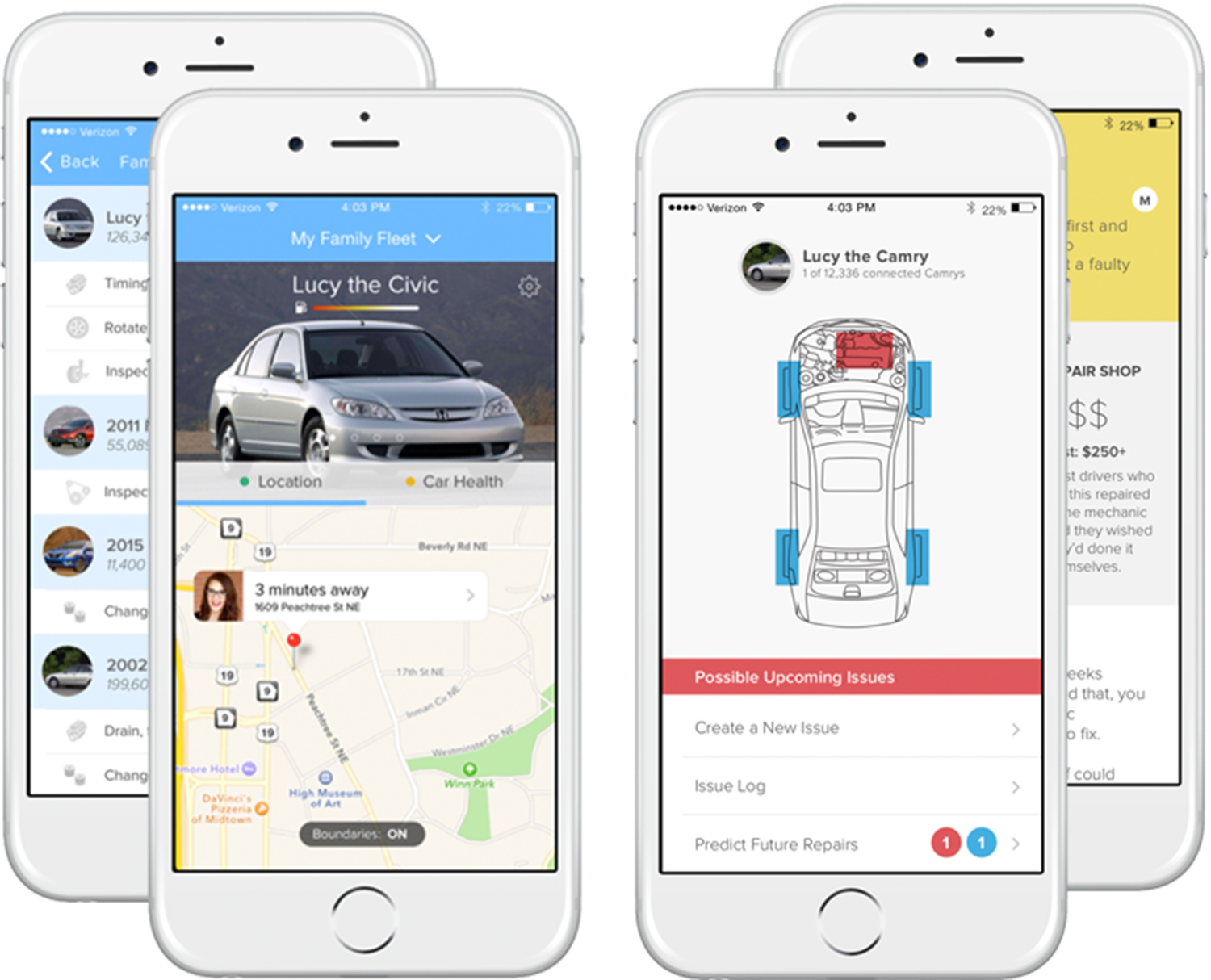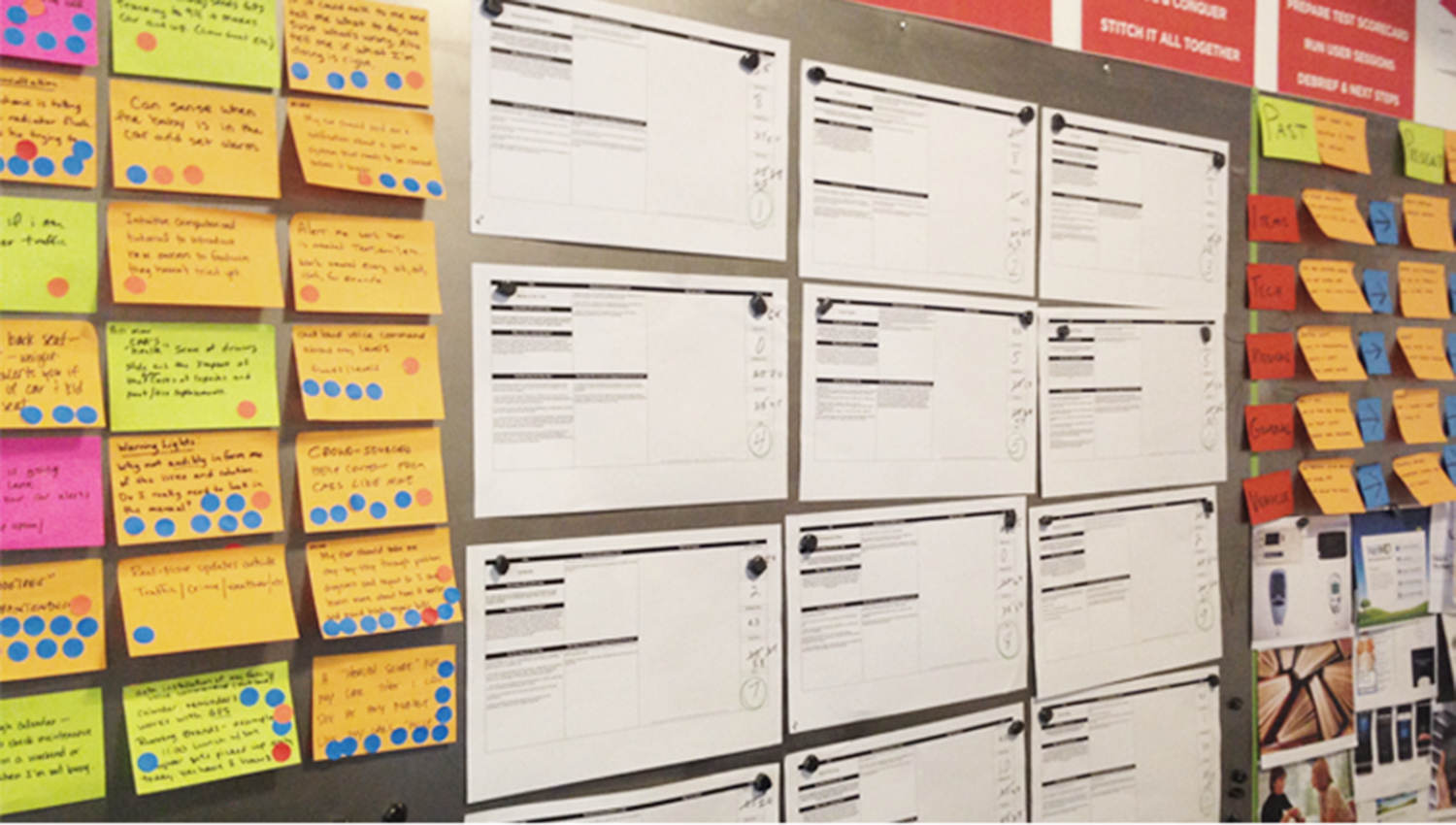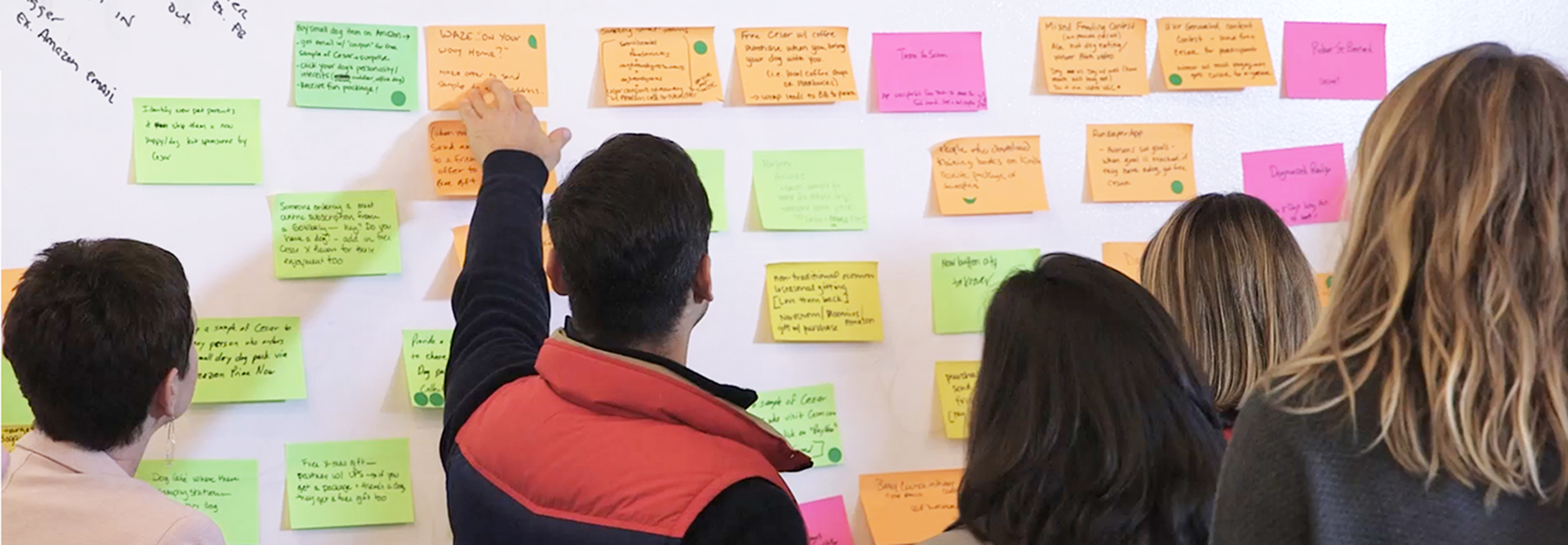

The connected car industry is booming right now. In fact, it’s expected to be worth $422B by 2022. With the launch of their new connected car app called Hum, Verizon wanted to rattle in the emerging telematics market. So they came to our innovation lab for ideas to lead a new age of driving. With a few short weeks at hand, we jumped right into the heart of the matter with a human-centered process to pinpoint what really matters to consumers, and in turn, to Hum.
With the goal of strengthening the bond between drivers and their cars through Hum, our lab started by listening to people talk about their cars. From these conversations, we gathered stacks of ideas to boost the app’s engagement with its users. These ideas were filtered through the evaluation process before the team zeroed in on the two that promised the most impact.
These ideas moved quickly from humble whiteboard sketches to low-fidelity prototypes before they were tested through user surveys and interviews. Our most telling insights informed the build-out of high-fidelity, clickable prototypes, which users took for a test drive.



Our 6-week sprint coasted to an end with research-backed personas and a feature roadmap for each prototyped app—tools to arm the Verizon Hum team as they took the wheel. With tested features, customer journeys, and a clear road ahead, Verizon hummed right along with confidence.
